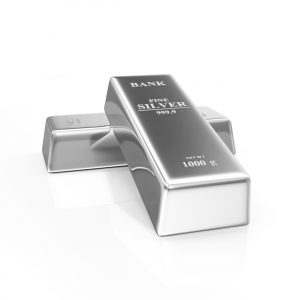Natural Resources – Gold
 Gold’s unique physical properties, its luster, easy workability, and virtual indestructability have given it a special place in the history of the world. Over centuries, gold has been prized for its rarity and beauty, and thousands of years ago became a medium of coinage, eventually becoming the formalized basis of economic life. Gold continues to adorn us, is used as an industrial metal in electronics, dentistry, medicine, aerospace and as an investment vehicle in the form of bars and coins.
Gold’s unique physical properties, its luster, easy workability, and virtual indestructability have given it a special place in the history of the world. Over centuries, gold has been prized for its rarity and beauty, and thousands of years ago became a medium of coinage, eventually becoming the formalized basis of economic life. Gold continues to adorn us, is used as an industrial metal in electronics, dentistry, medicine, aerospace and as an investment vehicle in the form of bars and coins.
The supply of gold is limited by nature itself. Thousands of pounds or ore are required to produce just one precious ounce. Gold is so scarce that all the gold that has ever been mined (approximately 135,000 metric tons) would fit into a cube measuring just 20 yards on each side. New supplies generally add less than 2% per year to the world’s total stock of gold. The largest source of demand is the jewelry industry. In recent years, demand from the jewelry industry alone has exceeded global mine production.
The reasons for investing in gold have remained much the same over history: (1) long term value, (2) asset of last resort, (3) highly liquid, and (4) as an asset diversifier. Through both hard times and times of plenty, gold endures. Market cycles are permanent facts of life, but gold has maintained its long term value. In contrast, most currencies (including the US dollar) and industrial economies have declined, which is why gold is often purchased as a hedge against inflation and currency fluctuations. There are also significant tax advantages in using it, as long as its not sold, but borrowed against. Currently, there is significant concern about potential upcoming inflation, reserve currency changes, and banking collapse, which makes obtaining gold a primary hedge.
Gold is a transition metal with the chemical symbol Au (from Latin: aurum) that is bright, slightly reddish yellow, dense, soft, and malleable, in its purest form. The world consumption of new gold produced is about 50% in jewelry, 40% in investments, and 10% in industry.[10] Gold’s high malleability, resistance to corrosion and other chemical reactions, and conductivity of electricity have led to its continued use in electrical connectors in all types of computerized devices (its chief industrial use). Gold is also used in infrared shielding, colored-glass production, gold leafing, and tooth restoration.
Natural Resources – Silver
 Silver has thousands of industrial uses and is considered by investors as a store of wealth. Since early history, it has become valuable for (1) malleability, (2) aesthetics, (3) antibacterial, and (4) rarity. All the silver ever mined in history would fit in a 52 meter cube (1,464,700 metric tons). Silver is not as rare as gold, but that has allowed it to be used for smaller denomination, and as a result has been the most widely used for coinage. The Egyptians began using it before 2600 BC, and valued it more highly than gold. Today, only a third is used for coins, silverware and jewelry. There are more than 10,000 industrial uses, since it is the best metal conductor of electricity known to man.
Silver has thousands of industrial uses and is considered by investors as a store of wealth. Since early history, it has become valuable for (1) malleability, (2) aesthetics, (3) antibacterial, and (4) rarity. All the silver ever mined in history would fit in a 52 meter cube (1,464,700 metric tons). Silver is not as rare as gold, but that has allowed it to be used for smaller denomination, and as a result has been the most widely used for coinage. The Egyptians began using it before 2600 BC, and valued it more highly than gold. Today, only a third is used for coins, silverware and jewelry. There are more than 10,000 industrial uses, since it is the best metal conductor of electricity known to man.
Interestingly, most mined silver is produced as a by-product when mining other metals, primarily copper, zinc/lead and gold. The majority of silver has been consumed. Some silver experts believe as much as 90 to 95% of all the silver ever mined has been lost to landfills.
Silver, like gold, is a precious metal that is considered a hedge against inflation and economic stress. If you had bought it in 2003, you’d have gotten a 500% return in the last 10 years. The silver market is only a fraction of the size of the gold market, which means less liquidity. Its driven significantly more by industrial demand, causing higher volatility, but fares well against general market volatility over the long term. Silver also helps diversify a portfolio, resulting in less overall risk.
Silver is a transition metal with the chemical symbol of Ag that has long been valued as a precious metal. Silver is used in numerous applications other than currency, such as solar panels, water filtration, jewellery, ornaments, high-value tableware and utensils, and as an investment medium (coins and bullion). Silver is used industrially in electrical contacts and conductors, in specialized mirrors, window coatings, and in catalysis of chemical reactions. Silver compounds are used in photographic film and X-rays.
